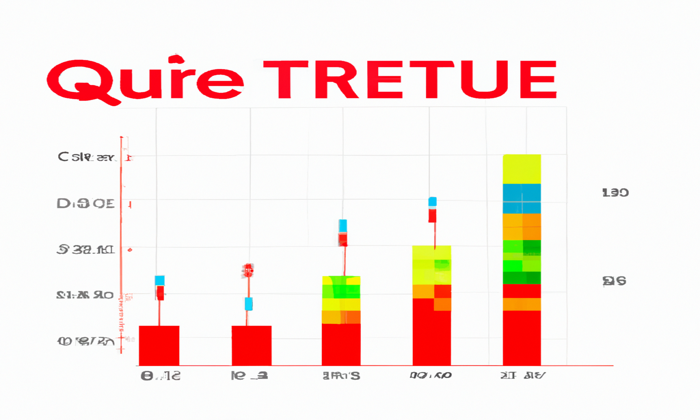Stablecoin legislation is at a pivotal crossroads as a coalition of Senate Democrats withdraws their support, threatening the advancement of a groundbreaking crypto bill. This unexpected shift reflects deepening fractures around the regulation of digital assets and raises questions about the future of stablecoin regulation in the United States. With calls for tighter safeguards against illicit financial activities and stronger penalties for noncompliance, lawmakers are now challenging the fundamental framework proposed for stablecoin issuers. Senate Democrats emphasize the need for comprehensive rules to ensure that emerging cryptocurrencies do not compromise existing financial infrastructure or national security. As discussions unfold, the legislative path for this significant financial governance may very well dictate the future landscape of crypto markets and digital currencies across the nation.
The ongoing dialogue surrounding cryptocurrency governance has brought the issue of digital currency oversight to the forefront of political discourse. Recent developments have unveiled a rift among lawmakers regarding the proposed regulatory framework for digital tokens backed by traditional assets, commonly known as stablecoins. Amidst growing volatility in the crypto market, discussions have intensified regarding the need for a cohesive approach to crypto bills that address both financial integrity and consumer protection. The involvement of Senate members in crafting a thorough regulatory landscape emphasizes the urgency for establishing a balanced approach towards digital assets. As this legislative structure takes shape, it will be critical for all stakeholders to find common ground, ensuring both innovation and security play essential roles in the evolving financial ecosystem.
Impact of Stablecoin Legislation on Digital Assets
The proposed stablecoin legislation represents a pivotal moment for the regulation of digital assets in the United States. As the first federal framework aimed explicitly at stablecoin issuers, its passage would provide clarity and much-needed guidelines for the operation of digital tokens tied to traditional currencies. However, the withdrawal of support from Senate Democrats underlines the complexities of navigating bipartisan interests within the ever-evolving crypto sector. Attention to this legislation could establish a benchmark, influencing how future regulatory measures are crafted for the broader digital asset landscape.
Furthermore, the implications of this legislation extend well beyond simple stablecoin issuance. It emphasizes the necessity for robust oversight mechanisms to safeguard against financial fraud and ensure compliance with existing laws. The stability of financial infrastructure, which stablecoins are designed to support, relies on clear rules that govern their use and function. Thus, the outcome of this legislative push will likely shape public confidence not only in stablecoins but in the emerging digital economy as a whole.
Senate Democrats’ Concerns Over Stablecoins
Senate Democrats have articulated substantial concerns about the current provisions of the crypto bill, particularly focusing on potential risks that stablecoins pose not only to individual investors but to the broader economic landscape. Their apprehensions include the potential for illicit financial activity that could be facilitated through loosely regulated stablecoin offerings. By calling for stricter regulations on overseas stablecoin providers, they seek to mitigate risks associated with capital flight and financial stability disruptions that could arise if these digital assets operate unchecked.
Moreover, the insistence on implementing stricter penalties for noncompliant actors indicates a proactive approach by Democrats to reinforce responsible embracing of digital assets while preventing misuse. The importance of national security in this context cannot be overstated, as stablecoins could inadvertently aid in money laundering or funding for illicit activities. As these lawmakers negotiate, they emphasize collaborative efforts that aim not just to regulate, but to create an equitable framework that can support innovation while safeguarding consumers and the financial system.
The Bipartisan Challenge in Crypto Regulation
Navigating the choppy waters of bipartisan agreement poses a significant challenge for the future of crypto regulation in the United States. With Senate Democrats publicly withdrawing their support, the risk of a Republican-dominated bill emerges. This could lead to a regulatory framework that may lack the necessary consumer protections and transparency desired by the Democrats, potentially alienating a substantial portion of the market. The calls for improved collaboration highlight the need for thoughtful conversations amongst both parties to not just pass legislation, but to ensure it is comprehensive and forward-thinking.
Moreover, the dynamic between party lines continues to evolve as influencers in the digital asset space, including political figures like members of the Trump family, place their stakes in the matter. This adds another layer of complexity that could sway bipartisan cooperation towards a more partisan outcome. The Senate’s ability to come together on efficient regulations for digital assets hinges upon mutual goals that prioritize consumer safety while enhancing America’s position in the competitive global cryptocurrency market.
Future of Stablecoins Amid Legislative Uncertainty
As the legislative landscape surrounding stablecoins remains uncertain, the future of these digital assets is precariously balanced. Stakeholders are keenly watching how the Democratic push for amendments might reshape the bill, which could either provide a robust framework for stablecoins or stall their development in the U.S. market entirely. With many investors looking for certainty, the potential for delays in regulation creates an atmosphere of caution among users and developers alike, who may seek to explore opportunities in less regulated markets.
This period of instability could also lead to innovation in alternative solutions to traditional stablecoins as companies adapt to a changing regulatory environment. With growing consumer interest in digital assets, the momentum for developing sound regulatory approaches must not be squandered by legislative gridlock. As Congress works to strike a balance between fostering innovation and instituting responsible regulations, the direction taken will heavily influence not only the growth of stablecoins but the entire digital asset ecosystem.
Bipartisanship: Key to Effective Crypto Bill
Bipartisanship is a critical factor in the passage of the crypto bill, particularly with regards to stablecoin legislation. A unified approach among lawmakers would not only enhance the credibility of the regulations being proposed but also play a crucial role in incorporating diverse perspectives and ensuring that the framework is comprehensive. The withdrawal of support from Senate Democrats illustrates how fragile bipartisan cooperation can be, especially when significant concerns about compliance and consumer protection remain unresolved.
In a landscape as unpredictable as cryptocurrency, effective legislation requires input from both sides of the aisle to foster a regulatory environment conducive to growth in digital assets. Stakeholders from across the spectrum should advocate for discussions that can lead to constructive adjustments in the proposed stablecoin bill. Engaging in good-faith negotiations will help Congress support the sustainable development of a digital financial ecosystem that can thrive with clear guidelines and robust protections.
The Role of Financial Infrastructure in Stablecoin Regulation
The integration of stablecoins into the existing financial infrastructure poses significant regulatory challenges that must be addressed to prevent disruptions. Strong financial infrastructure is vital in ensuring that stablecoins fulfill their intended purpose of providing stability and security to digital transactions. Therefore, legislation must carefully consider how these assets interact with traditional banking systems to safeguard the stability of both. Senate Democrats have stressed the importance of this aspect, seeking to ensure that these digital currencies do not undermine the financial system’s integrity.
Moreover, a well-structured regulatory framework would provide clarity for financial institutions looking to adopt stablecoins as a part of their service offerings. The collaboration between policymakers and industry players will determine how effectively these digital assets can be integrated into the financial landscape without compromising market stability. Collectively, a strong regulatory framework addressing financial infrastructure will bolster consumer confidence and encourage the responsible use of stablecoins in everyday transactions.
Consumer Protection Considerations in Stablecoin Legislation
In the ongoing discussions surrounding stablecoin legislation, consumer protection emerges as a principal concern for lawmakers. With the rise of digital currencies, it is paramount to establish safeguards that protect consumers from potential fraud and market volatility. This concern motivates Senate Democrats to push for stricter regulations that would address these risks while fostering a secure environment for stablecoin transactions. Without adequate consumer protections, the stablecoin ecosystem could face severe trust issues as users navigate the complexities of digital assets.
Moreover, as stablecoins become more integrated into everyday financial activities, the demand for transparency and accountability grows. Ensuring that users can access clear information about the functioning and backing of stablecoins will be fundamental to building consumer confidence. As the legislative process continues, lawmakers must prioritize establishing consumer protections that align with the rapid development of the digital asset market while empowering individuals to make informed decisions.
The Urgency of Federal Regulation for Stablecoins
The fast-paced evolution of stablecoins necessitates immediate federal regulation to harness their potential while minimizing risks. As digital assets penetrate various aspects of finance and commerce, stakeholders must ensure that a regulatory framework is established swiftly to maintain economic stability and enhance consumer protection. The bipartisan discussions surrounding new legislation highlight the urgency of addressing the governance issues that come with the use of stablecoins, particularly their interactions with traditional financial systems and emerging technologies.
Congress’s action is vital in shaping a regulatory environment that allows for innovation while also providing the oversight necessary to protect consumers and maintain market integrity. Without prompt and strategic regulation, stablecoins risk becoming a haven for illicit activities, undermining public trust in digital assets. As discussions unfold, it becomes increasingly clear that regulating stablecoins is not just about managing risks but also about fostering an environment that encourages responsible growth in the digital asset ecosystem.
Navigating Political Sensitivities in Stablecoin Regulations
Political sensitivities around stablecoin regulations, especially with the growing influence of notable political families in the crypto sector, complicate the legislative landscape. With recent developments involving the Trump family and their interests in digital assets, their involvement introduces a level of scrutiny that could influence legislative outcomes. Lawmakers must navigate these political sensitivities to ensure that the focus remains on creating effective regulations that serve the public interest rather than political agendas.
Additionally, the discourse around stablecoin legislation will need to address these political dynamics without alienating key stakeholders. Finding common ground amid rapidly changing political scenarios is essential for crafting a regulatory framework that all parties can support. As the debate continues, legislators must prioritize a comprehensive approach that not only balances regulatory needs but also considers the broader implications of stablecoins on the national and global stage.
Frequently Asked Questions
What is the current state of stablecoin legislation in the U.S. Senate?
Stablecoin legislation is currently in a state of uncertainty, as recent actions by Senate Democrats have threatened to derail a crucial crypto bill aimed at establishing a federal framework for stablecoin issuers. Despite previous bipartisan support, a group of nine Democratic senators has expressed concerns about unresolved issues such as financial safeguards, compliance regulations for overseas providers, and measures to protect existing financial infrastructure.
Why are Senate Democrats withdrawing support for the stablecoin bill?
Senate Democrats are withdrawing support for the stablecoin bill due to demands for changes related to crucial issues such as preventing illicit financial activities and ensuring that stablecoins do not undermine financial stability. Their statement emphasizes the importance of negotiating modifications to address these concerns before they can fully support the crypto bill.
What do Senate Democrats want to change in the current stablecoin regulation proposal?
Senate Democrats are advocating for stronger safeguards against illicit financial flows, stricter compliance rules for foreign stablecoin providers, enhanced national security measures, and more rigorous penalties for noncompliant actors within the digital assets space. They believe these changes are essential for ensuring the stability and safety of the financial infrastructure surrounding stablecoins.
How does the stablecoin bill affect the financial infrastructure in the U.S.?
The stablecoin bill is intended to create the first federal framework governing stablecoins, which are digital tokens usually pegged to the U.S. dollar or other assets. By establishing clear regulations, the bill seeks to protect the existing financial infrastructure from potential disruptions caused by the rapid growth of digital assets, thus ensuring stability and security in the financial system.
What are the implications of the Democratic senators’ statements regarding the crypto bill?
The statements from the Democratic senators imply a deepening division within the Senate over stablecoin regulation, potentially complicating the legislative process for the crypto bill. Their willingness to negotiate indicates that while they see the necessity for a regulatory framework for digital assets, they also want to ensure that the legislation adequately addresses significant concerns related to security and compliance.
What role do Senate Democrats play in the future of stablecoin legislation?
Senate Democrats play a critical role in the future of stablecoin legislation as their support is vital for passing the crypto bill. Their current opposition signals the need for bipartisan collaboration to modify the bill and address their concerns. This dynamic could either facilitate the bill’s progression or lead to its stalling, emphasizing the importance of consensus in shaping effective stablecoin regulation.
What challenges does the crypto bill face from Senate Democrats?
The crypto bill faces significant challenges from Senate Democrats, including demands for enhanced regulatory protections against illicit financial activity, stricter rules governing overseas stablecoin providers, and measures to ensure that stablecoins do not compromise U.S. financial stability. These challenges highlight the legislative hurdles that remain before the bill can advance in the Senate.
Can the stablecoin legislation be modified to gain broader support?
Yes, the stablecoin legislation can be modified to gain broader support if Senators from both parties engage in meaningful negotiations to address the concerns raised by Senate Democrats. This willingness to work together could lead to a bipartisan solution that balances the interests of both sides while facilitating the regulation of digital assets.
| Key Point | Details |
|---|---|
| Senate Democrats Withdraw Support | Nine Senate Democrats are threatening to derail a stablecoin bill, indicating a growing divide in crypto regulation. |
| Unresolved Concerns | Demands for changes include safeguarding against illicit financial flows and ensuring national security. |
| Bipartisan Negotiations | Democrats express a willingness to negotiate but stress the need to collaborate on a regulatory framework. |
| Legislation’s Path Complicated | The bill faces challenges as Trump’s family involvement adds political sensitivity. |
Summary
Stablecoin legislation is currently facing significant challenges as Senate Democrats withdraw their support for the proposed bill. This development highlights the ongoing complexities in regulation within the rapidly evolving digital asset sector. With unresolved concerns relating to national security and market stability, collaboration among lawmakers will be crucial to achieve a comprehensive legislative framework that addresses the needs of both the crypto industry and regulatory requirements.
Stablecoin legislation has become a focal point of discussion as the Senate faces growing tensions over the regulation of digital assets. Recently, a group of nine Senate Democrats openly withdrew their support for a significant crypto bill that aimed to provide a federal framework for stablecoin issuers, raising questions about the future of stablecoin regulation in the U.S. This unexpected decision highlights the complexity of establishing rules that not only foster innovation but also safeguard against financial risks. Key concerns include protections against illicit activities, national security, and maintaining the integrity of existing financial infrastructure. As the debate unfolds, it is crucial for lawmakers to engage in bipartisan dialogue to address these pressing issues and set clear standards for stablecoin regulation.
The ongoing deliberations surrounding digital currency frameworks reflect broader discussions on regulatory measures for virtual assets, commonly referred to as “crypto legislation.” Recent developments indicate a rift within political circles, particularly among Senate Democrats, regarding the balance between fostering innovation in this burgeoning market and ensuring robust oversight. The proposed legislative efforts aim to establish a coherent set of rules for the burgeoning sector of fiat-pegged digital tokens, known colloquially as stablecoins. These discussions are vital as they touch upon essential aspects of financial security, consumer protection, and the potential impact on the overall financial system. Engaging with these topics will be pivotal in shaping a resilient infrastructure for the future of digital finance.














